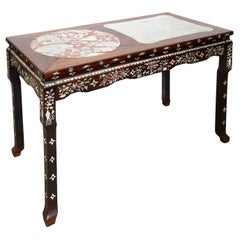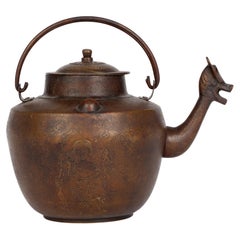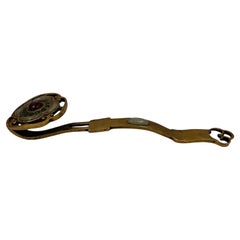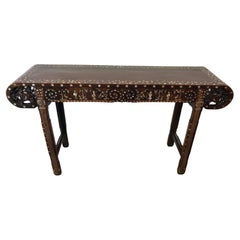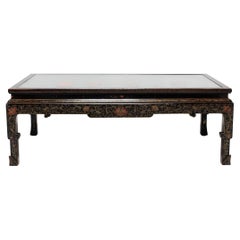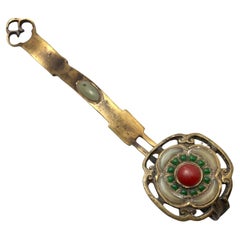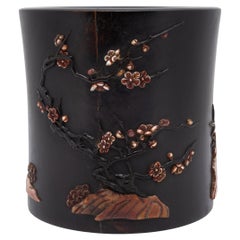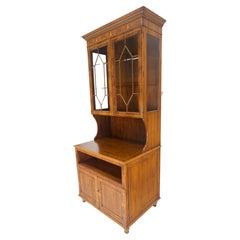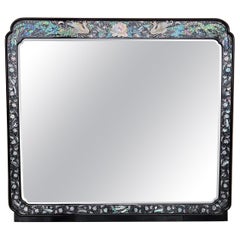Chinese Inlay Furniture
Antique Late 19th Century Chinese Chinese and East Asian Rugs
Marble
Antique Late 19th Century Chinese Qing Metalwork
Bronze
Early 20th Century Chinese Chinese Export Scholar's Objects
Jade, Bronze
Antique 19th Century Chinese Chinoiserie Furniture
Mother-of-Pearl, Rosewood
Early 20th Century Chinese Chinoiserie Furniture
Agate, Soapstone
Mid-20th Century Chinese Chinoiserie Metalwork
Jade, Brass
Antique Late 19th Century Chinese Qing Scholar's Objects
Soapstone
20th Century American Federal Cupboards
Glass, Yew
Mid-20th Century European Chinese Export Wall Mirrors
Wood
Early 20th Century Chinese Chinese Export Furniture
Hardwood
Early 20th Century Chinese Chinese Export Furniture
Hardwood
Early 20th Century Chinese Chinese Export Furniture
Mother-of-Pearl, Rosewood
Early 20th Century Chinese Qing Wall Mirrors
Mirror, Hardwood, Boxwood
Early 20th Century Chinese Scholar's Objects
Stone
20th Century Chinese Furniture
Hardwood
Antique Late 19th Century Chinese Qing Furniture
Silver
Early 20th Century Chinese Chinese Export Mounted Objects
Rosewood
Antique Early 19th Century Chinese Qing Metalwork
Bronze, Silver
Antique Mid-19th Century Chinese Qing Side Chairs
Elm, Burl
Vintage 1950s Chinese Chinoiserie Armchairs
Rosewood, Mother-of-Pearl
20th Century Chinese Chinese Export Stools
Mother-of-Pearl, Hardwood
Early 20th Century Chinese Chinese Export Decorative Boxes
Mother-of-Pearl, Wood, Lacquer
Antique Mid-19th Century Chinese Qing Jewelry Boxes
Brass
Antique 19th Century Asian Furniture
Mother-of-Pearl, Hardwood
Mid-20th Century Chinese Chinese Export Antiquities
Brass, Enamel
Mid-20th Century Chinese Benches
Stone
Antique 19th Century Chinese Chinoiserie Decorative Boxes
Silver
Antique Late 19th Century Chinese Qing Lacquer
Coconut
Mid-20th Century Unknown Chinese Chippendale Sculptures and Carvings
Bone
Antique 19th Century Chinese Qing Metalwork
Enamel, Iron
Antique Mid-19th Century Chinese Antiquities
Metal
Mid-20th Century Chinese Chinese Export Coffee and Cocktail Tables
Marble
Mid-20th Century Chinese Chinese Export Vases
Brass, Copper, Enamel
Mid-20th Century Chinese Anglo-Japanese Furniture
Wood
Early 20th Century Chinese Side Chairs
Wood
1990s Chinese Panelling
Wood
Antique Early 18th Century Chinese Chinoiserie Antiquities
Mother-of-Pearl
Early 20th Century Indonesian Qing Scholar's Objects
Lacquer, Bamboo, Hardwood
Antique 1850s Cabinets
Wood
1990s American Sideboards
Brass
20th Century Chinese Pitchers
Wood, Lacquer
Early 20th Century Chinese Furniture
Stone, Brass
Antique 1880s Chinese Archaistic Table Lamps
Bronze, Lead
Antique 18th Century Victorian Center Tables
Wood, Porcelain, Oak
Early 20th Century Chinese Qing Furniture
Mirror, Hardwood, Mother-of-Pearl
Mid-20th Century Chinese Screens and Room Dividers
Wood
Mid-20th Century Chinese Screens and Room Dividers
Wood
Antique Mid-19th Century Chinese Qing Lacquer
Lacquer
Vintage 1970s Chinese Side Tables
Mother-of-Pearl
Antique Mid-19th Century Chinese Chinese Export Jewelry Boxes
Metal
Vintage 1980s Chinese Side Chairs
Wood
Mid-20th Century Chinese Export Corner Chairs
Mother-of-Pearl, Wood
20th Century Chinese Coffee and Cocktail Tables
Wood, Lacquer
20th Century Chinese Chinese Export Side Tables
Mother-of-Pearl, Rosewood
Antique Late 19th Century Chinese Qing Antiquities
Lacquer
Mid-20th Century Chinese Cabinets
Stone, Brass
Vintage 1980s Unknown Side Tables
Mother-of-Pearl
- 1
Chinese Inlay Furniture For Sale on 1stDibs
How Much is a Chinese Inlay Furniture?
- What is bone inlay furniture?1 Answer1stDibs ExpertApril 5, 2022Bone inlay furniture is any piece of furniture that shows off embedded pieces of bone. Often, the inlay is in an intricate geometric or floral pattern. On 1stDibs, find a large collection of bone inlay furniture from some of the world’s top sellers.
- 1stDibs ExpertApril 5, 2022Mother of pearl inlay furniture is a chair, table or case good usually made out of wood and embellished with fragments of oyster or mussel shells called mother of pearl. Furniture makers make carvings into the furniture and then carefully add the cut mother of pearl. On 1stDibs, find a range of mother of pearl inlay furniture.
- 1stDibs ExpertApril 5, 2022Bone inlay furniture is usually made out of wood or metal. An artisan creates carvings along the top, front or sides of the piece and then carefully applies pieces of natural bone to add ornamentation to the furnishings. On 1stDibs, shop a range of bone inlay furniture.
 PAGODA REDOctober 7, 2020
PAGODA REDOctober 7, 2020To determine the age of a Chinese furniture piece, look carefully at the joinery and finish. Natural expansion and contraction of the wood over time will cause a joint to protrude or retract, distorting a once-seamless fit. Antique lacquer finishes become crackled and worn over time. Areas of exposed wood, such as the underside of a table, the footrest of a chair, or the back of a cabinet should appear raw and dry compared to the finished surface. With use, the legs of tables and chairs become weathered near the bottom from precipitation and use.
- 1stDibs ExpertNovember 4, 2024To identify antique Chinese furniture, look carefully at its details. Chinese craftsmen often built furniture using mortise and tenon joinery, eliminating the need for nails and screws. If you see this type of hardware, your piece is likely not at least 100 years old, especially if the hardware still looks new and shiny. Since antique furniture was handmade, you will normally see slight imperfections, such as tool marks or slight variations in carvings. Pieces that appear completely uniform and pristine are less often genuine antiques.
When present, maker's marks can also be helpful. Research the marks to learn more about when the maker was active and producing pieces like yours. Alternatively, you can have a certified appraiser or experienced antique dealer evaluate your furniture for you.
Shop an assortment of antique Chinese furniture. - 1stDibs ExpertJune 15, 2023To care for Chinese lacquered furniture, wipe it with a damp cloth regularly. You can use a paste wax intended for use on lacquer finishes to restore shine, but avoid using harsh furniture polishes and cleaners on pieces. On 1stDibs, shop a range of lacquered furniture.
- 1stDibs ExpertApril 5, 2022Chinese-style furniture is usually called Chinoiserie. The term indicates furniture and decorative objects produced in Europe and North America that borrow design elements from pieces made in China and other East Asian countries. On 1stDibs, find a collection of Chinoiserie.
